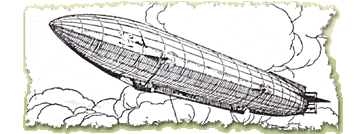

My Sky Sailor
Death,
Soldiers
Archival information
America,
Cardington,
River Humber
Lyrics
1
When the Great War ended,
I should have been a bride,
But what the German guns had spared,
The Spanish Flu denied.
I felt my life was over,
I’d never love again,
But then to Howden there came Jimmy,
My sky sailor, my American.
2
I worked in the office,
At Howden’s aerodrome.
Some U.S. Navy flyers came,
To fetch an airship home.
They seemed to me too forward,
Such loud and brash young men,
But my heart changed when I met Jimmy,
My sky sailor, my American.
3
We walked out together,
For near enough a year,
While Jimmy trained and waited for,
His airship to appear.
The R38 was finished,
And brought from Cardington.
By then I was engaged to Jimmy,
My sky sailor, my American.
4
Lighter than a feather,
And silver in the sun,
She lifted off from Howden Field,
To make her last trial run.
High up above the Humber,
She failed and down she spun.
Air, water, fire, then earth claimed Jimmy,
My sky sailor, my American.
5
When the Great War ended,
I should have been a bride,
But what the German guns had spared,
The Spanish Flu denied.
I felt my life was over,
I’d never love again,
But then to Howden there came Jimmy,
My sky sailor, my American.
Archival information
America,
Cardington,
River Humber
This is a contemporary song about Yorkshire.
Provenance
I wrote My Sky Sailor in 2005 but I had known about the R38 airship tragedy for a long time before that. About half a mile from my house, in Hull’s Western Cemetery, there is a memorial to the men who died and, over the years, articles about the disaster have occasionally appeared in The Hull Daily Mail. However, it was not until I read Tom Jamison’s excellent book Icarus Over The Humber that I discovered many of the details.
When her construction was completed in 1921, the R38 was the biggest airship ever built. On her final proving trial she suffered structural failure and crashed into the River Humber, just near Hull’s Victoria Pier. The airship, which is also known by its American designation ZR2, was manned by a mixed British and U.S. crew because the British Government was in the process of selling it to the U.S. Government.
Of the 49 crew members, 17 belonged to the U.S. Navy and only one of these survived. All of the 28 British and 16 U.S. crew members who died are remembered on the memorial in the Western Cemetery. Some of the British men are in a common grave there, although all the American bodies were shipped back to the States.
The reasons for the disaster probably lie in the fact that the planned series of post production trials and safety checks was drastically cut from 150 hours to 50. On the final part of the last trial the airship had not experienced anything like the turbulence which was anticipated on the Atlantic crossing and so there was a last minute attempt to simulate this with an ill-judged sharp turn over the River Humber. To meet the needs of the recent war, the R38 had been specifically designed to operate at high altitude and during this rapid change of direction the stresses exerted by the much denser air found at the flying height of only 2,500 feet caused the metal airframe to buckle and break.
There had been up to 63 U.S. Navy men who had served in the US Rigid Air Detachment at Howden Airship Station in East Yorkshire from April 1920 until the disaster in August 1921. For most of that time they were undergoing training while they waited for the building of R38 to be completed at Cardington in Bedfordshire. During the period of waiting, 8 of the U.S. sailors married British women.
In the song, details about the airship and its final flight are depicted as accurately as I could make them but I chose to fictionalise the characters because, after trying to trace the subsequent histories of some the real people involved, I realised that after all this time it would be too difficult to be sure of all the details. In addition to this, part of my fascination with the R38 story when I first read about it in the Hull Daily Mail, was sparked by the report that from time to time an unknown person would leave flowers on the memorial in the Western Cemetery.
Choosing fictional characters also allowed me to include things which I knew had happened to people at that time, although perhaps not to any of the real actors in the R38 story. This accounts for the reference to the Spanish Flu Pandemic of 1918 which killed about three times as many people as were killed in WW1, and also to the idea of having two deceased fiancées which was something that had happened to my next door neighbour, now long dead, who never married.
There are many sites on the web which deal with the R38/ZR2, with Cardington and with the Spanish Flu Pandemic of 1918. Wikipedia is a good place to start as it has articles on all of these topics.
en.wikipedia.org/wiki/R38_(ZR-2)
en.wikipedia.org/wiki/Cardington,_Bedfordshire
en.wikipedia.org/wiki/Spanish_Flu
www.airshipsonline.com/airships/r38/index.html shows a film clip of the R38’s final take-off
The web site uk.geocities.com/deko476/r38.htm has some photos of the men in the Howden Rigid Air Detachment.
Geoff Lawes May, 2009
Recorded at Moving Mountains Studios by Martin Wharton

